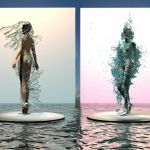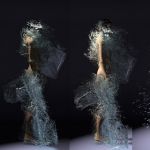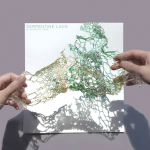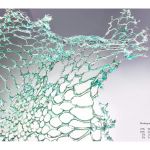
The clothes of the future are biodegradable
Emerging designer Scarlett Yang has created a biodegradable material that changes over time and doesn't pollute
September 5th, 2020
Sustainability is one of the most debated issues in today's fashion industry. While big luxury brands and conglomerates are still sticking to old production cycles, and the overproduction of fast fashion labels has not stopped, a young designer graduate of Central Saint Martens, Scarlett Yang, has come up with an innovative solution. Yang designed a dress composed entirely of a biodegradable material of her own invention, created from silk protein, water, tincture and an algae extract. The project currently remains at a conceptual stage: the designer has in fact created hypnotic 3D renders that simulate the texture of the material and that could be used in the future in augmented reality and CGI projects. But the new material, which the designer has called Serpentine Lace, has endless possible applications, from interior design to packaging.
With her project Decomposition of Materiality and Identities, the 24-year-old designer explores the concept of materiality in fashion both from a physical and digital point of view. The work is based on the concept of a "circular living system" in which garments grow, decompose and change shape depending on their use and the passage of time. After their dissolution, the garments can be reconfigured: for example, the hem piles narrow and the jackets become skirts. The 3D rendering created by Yang transforms the sketches into digital fabrications that simulate a continuous transformation of the garment that goes beyond any idea of traditional fashion design. Regardless of its more conceptual branches, however, the project was born, as the designer told Fast Company, from the consideration that the same sartorial projects of fashion students create scraps and waste of material that contribute to fueling the problem.
The mix of silk protein and algae extract invented by Yang is able to make her creations partially waterproof - partially because it is precisely in the water that the material dissolves, avoiding all the problems of waste and recycling. The speed with which the tissue dissolves in water depends on its structure and thickness, as well as the stiffness of the material is determined by the proportions of proteins and algae. Regardless of the details of the invoice, the creative process remains the same: the two materials are mixed and then poured into a 3D mould where they solidify. Once this phase is completed, the various parts are assembled to create ethereal and surreal silhouettes – reminiscent (and probably inspired) by Iris van Herpen's creations.

































































